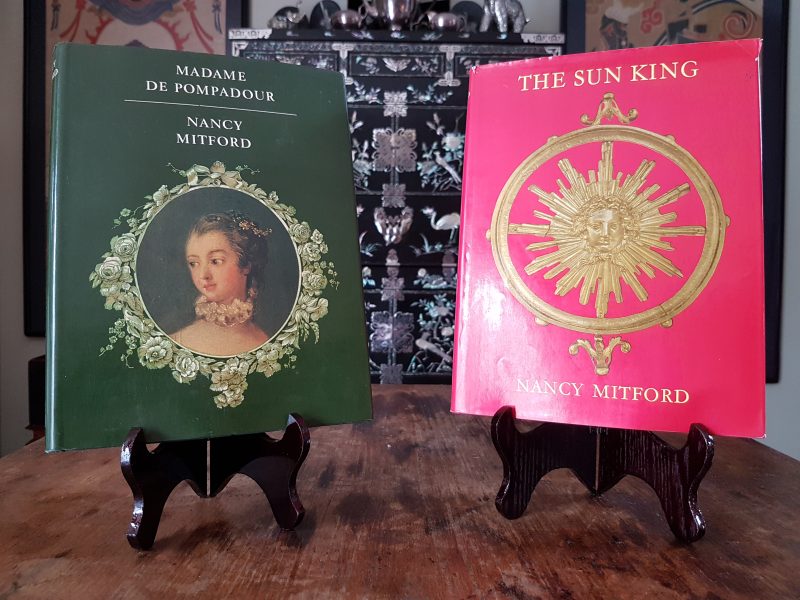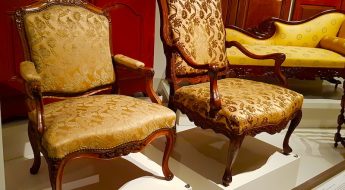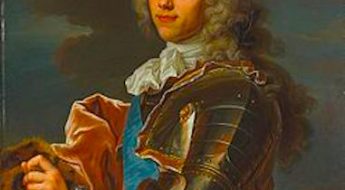Having devoured Nancy Mitford’s Frederick the Great, which gave me a burning desire to visit Potsdam, the site of Frederick’s beloved palace of Sans Souci, I became curious about the other people and places mentioned in the book. For instance, this man Voltaire. Who was he? And Madame de Pompadour? Cardinal de Fleury? None of these people were showing up in our weekly viewings of The Remarkable Life of Friedrich von der Trenck.

Sans Souci
It occurred to me that Miss Mitford might have written other books. Returning to the library, I looked up her other works in the card catalogue. Sure enough, it listed Madame de Pompadour and The Sun King.

I loved the sparkle and wit of her prose, even as a 10-year-old. Of course, a good deal of her wit went over my head. I also loved her personal insights. I noticed, for instance, that in The Sun King she was able to offer a first-hand comparison of the toilet facilities at Versailles and Buckingham Palace, which then, unlike now, was not open to the general public.
Since the great courtesan was Frederick’s contemporary, I decided to borrow Madame de Pompadour first. Thus it was that I discovered the teeming, scheming labyrinth of Versailles in the mid-18th century.
Miss Mitford was not a professional historian. I didn’t know it then, but she had mainly been known as a novelist and socialite, one sixth of the fabled Mitford sisters, before she took up writing biographies in middle age. What she lacked in historical training, she more than made up for with the immediacy and vividness of her prose, and the keenness of her social insights. Familiar with royalty and an aristocrat herself, she could explain the world of Versailles in a way that an academic historian never could.
Through her eyes, the entry of the bourgeois Mme d’Etioles — as Mme de Pompadour was known before Louis XV created the marquisate of Pompadour for her — to the court of Versailles takes on a daunting air. The following paragraph is worth quoting in full, I feel:
The Court was always referred to, by those who belonged to it, as ce pays-ci, this country, and indeed it had a climate, a language, a moral code and customs all its own. It was not unlike a public school and just as, at Eton, a boy cannot feel comfortable, and is, indeed, liable to sanctions, until he knows the names of the cricket eleven; various house colours; who may, or may not carry an umbrella; or on which side of the street he may or may not walk; so, at Versailles, there were hundreds of facts and apparently meaningless rules which it would be most unwise to ignore. People sometimes broke them on purpose, hoping thereby to gain a little more privilege for their families; a Princess of the Blood would arrive in the Chapel followed by a lady-in-waiting with her purse on a cushion, or a duchess be carried to the royal rooms in an armchair — thin end of the wedge for a sedan chair — but somebody always reported it, and a sharp message from the monarch would bring the culprit to heel. To break the rules from sheer ignorance would be thought barbarous. (Madame de Pompadour, p 66)
Observe the combination of vivid detail, emphasis on the personal, and the link to a modern (for the mid-20th century British reader) parallel. I was spellbound by her style then, and decades later I still take pleasure in it.

Versailles
Reading and re-reading Madame de Pompadour and The Sun King, I gradually came to understand that Versailles was not only a palace, the residence of the French kings between 1682 and 1789, but also an idea and an ideal whose glamour ensorcelled other sovereigns the length and breadth of Europe.
I also realized that I was going to have to learn French.

















Leave a Comment